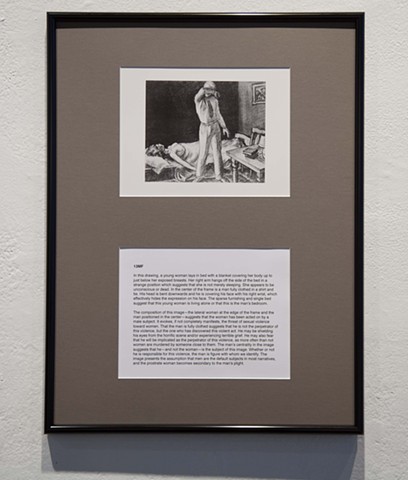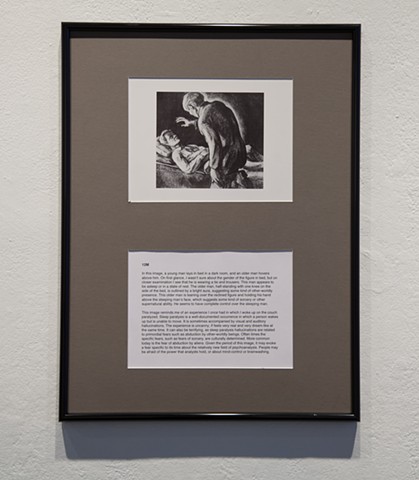Critting the Thematic Apperception Test
Part of n of 1
MFA Thesis Exhibition
Calarts
2014
The Thematic Apperception Test (TAT) is a projective psychological test in which a patient is given a set of ambiguous pictures and asked to tell a story about the picture. The TAT was first published in 1943 and developed in the 1930s by psychologist Henry A. Murray, Chistiana D. Morgan, and the staff at the Harvard Clinic at Harvard University. Many of the cards were originally drawn by Morgan, or appropriated from existing paintings, illustrations, or photographs. Artist Samuel Thal was hired to redraw many of the cards prior to the test being published in 1943.
The examinee is given a set of pictures and instructed to “make up as dramatic story as you can for each.” The examiner then records the stories that the examinee makes up. There is one blank card, Card 16, usually given last, where the examiner instructs the examinee to imagine his or her own picture. The full test consists of 30 cards, 20 of which are given to the examinee. The cards are coded for whom the cards is appropriate for, “M” for men, “F” for women, “B” for boys, and “G” for girls. Clinicians have devised their own protocols wherein the examinee is given fewer cards and/or the same cards are given to men and women.
The TAT is a subjective measure of personality functioning. The goal of the test is to aid a clinician, such as a therapist, to more fully understand the issues that a patient is dealing with, such as difficult family dynamics, or to indentify areas of concern that the patient has not revealed in the normal course of therapy. By using this test, the clinician hopes to gain a deeper level of insight into the patient.







